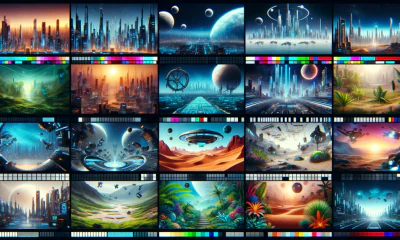Artificial Intelligence
Artificial Intelligence Is Now Engaged At Analyzing Art

Dr. Ahmed Elgammal of The Rutgers University and Dr. Mariam Mazzone of College of Charleston have created a joint AI project that is now engaged at analyzing artworks and comparing them to what art historians and critics have concluded.
As Techworld reports, the two scientists “teamed up to investigate how machines classify styles of art and how that relates to the analysis of art historians. They decided to create a system based on the theories of Heinrich Wölfflin (1846–1945), a Swiss professor whose principles of classification were highly influential in the development of the discipline of art history.”
As Dr. Elgammal himself explains, “It was very hard to advance AI beyond what we have right now without looking at this cultural human product, because in the end, artificial intelligence is about making a machine that has perceptual and cognitive abilities, and when you look at art, that's what's happening.”
The approach Dr. Elgammal and Dr. Mazzone took was to exclude subject matter out of the analysis and to focus on the ‘visual schema’ of the work so that that it would be possible to identify style patterns through time. “ Its emphasis on distinctive features and binary logic matched well with machine learning.”
As explained, “Deep convolutional neural networks were trained to classify these styles along with a number of variables. They were fed almost 80,000 digitized paintings and trained to find the patterns. The system had been given no understanding of time or who created each artwork, but it nonetheless placed the paintings along a smooth chronology that was closely correlated with the times in which they were painted.
It placed them along a timeline starting at the renaissance and then progressing through baroque, neo-classicism, romanticism, impressionism, post-impressionism, expressionism, and cubism, before ending with abstract art.”
The researchers also “trained the machine to measure creativity by spotting unusual data points and comparing them to what appeared in other artworks.”
The results AI came up with mostly confirmed the ideas art historians already have. What it added was “computational evidence of what had previously been based on subjective analysis.”
According to Dr. Mazzone, the ability of AI to analyze “thousands of artworks could identify fundamental changes in styles that a human eye could never see. It could even predict the artistic forms of the future.” She added that AI “makes very few errors, and when it makes an error in some ways, it's just the machine seeing something different than what the human is seeing. And that is interesting, too. What is it seeing that is unlike what human beings perceive?”














